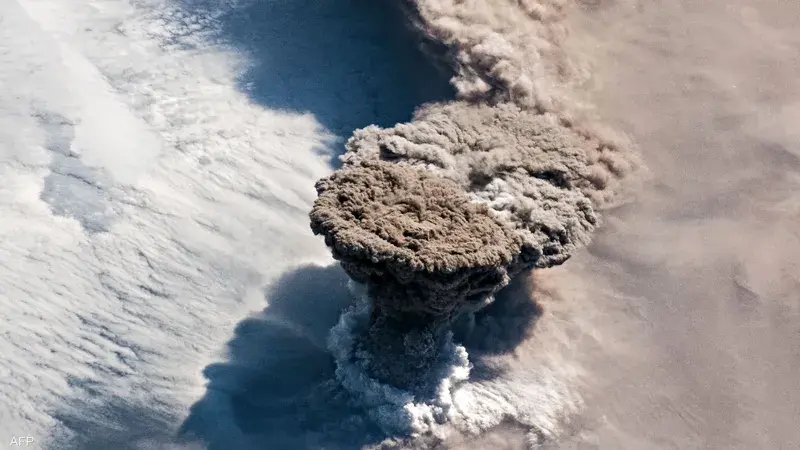Massive Tsunami Waves Hit Hawaii and Japan After Kamchatka's Strongest Earthquake in Decades
- Next News
- Jul 30
- 3 min read
A massive seismic event on Wednesday profoundly impacted vast areas across the Pacific Ocean. An 8.8-magnitude earthquake struck Russia's Kamchatka Peninsula in the Far East, generating powerful tsunami waves. These waves reached heights of up to five meters in some regions, prompting authorities to issue widespread evacuation orders in the US state of Hawaii and across the Pacific, including Japan's east coast, which is still recovering from the devastating 2011 earthquake and tsunami.

Earthquake Aftermath in Russia and Regional Impact
The earthquake's epicenter was close to the Earth's surface, amplifying its destructive impact. It damaged numerous buildings in the remote Russian region and resulted in several injuries. According to regional officials and Russia's Ministry of Emergency Situations, tsunami waves ranging from three to four meters swept through locations in Kamchatka, submerging parts of the port and a fish processing plant in the town of Severo-Kurilsk, and dragging vessels from their moorings.
Kamchatka Governor Vladimir Solodov stated in a video posted on Telegram that "today's earthquake was serious and the strongest in decades." Russian scientists confirmed this, noting it was the most powerful earthquake to hit the region since 1952, underscoring the event's scale and historical significance.
High Alert in Hawaii
In the US state of Hawaii, authorities took urgent precautionary measures. Residents in coastal areas were instructed to move to higher ground or to the fourth floor or higher in buildings to ensure their safety. The Coast Guard also ordered all ships to leave harbors as the tsunami approached.
The Honolulu Department of Emergency Management issued an urgent warning on X: "Move! Destructive tsunami waves are expected." The Pacific Tsunami Warning Center reported that waves up to 1.7 meters high had begun hitting the Hawaiian islands. Although State Governor Josh Green had earlier stated that Hawaii had not experienced any consequential waves, all flights to and from Maui island were canceled as a precautionary measure.
The US Geological Survey indicated that the earthquake's epicenter was 19.3 kilometers deep and approximately 119 kilometers from Petropavlovsk-Kamchatsky, a Russian city with a population of 165,000. The US Tsunami Warning System issued a "dangerous tsunami" alert across the Pacific, indicating that waves could exceed three meters on some coasts of Russia and Ecuador, while ranging between one and three meters in Japan, Hawaii, Chile, and the Solomon Islands. Former US President Donald Trump commented in a social media post: "Due to a massive earthquake in the Pacific, a potential tsunami warning has been issued for those living in Hawaii."
Japan Facing the Threat: Lessons from the Past
Tsunami sirens blared in towns along Japan's Pacific coast, and authorities urged tens of thousands of residents to evacuate immediately. Japan has a painful history with tsunamis, particularly the 2011 disaster that caused a meltdown at the Fukushima nuclear plant.
In this context, Tokyo Electric Power Company announced that workers had evacuated the Fukushima nuclear plant as a precautionary measure. Regarding casualties, Asahi TV reported that a 58-year-old woman died when her car fell off a cliff during an evacuation in the Mie area of central Japan. Nissan Motor Company also suspended operations at some local factories in Japan to ensure employee safety, according to Japan's Kyodo News Agency.
Japanese officials reported three tsunami waves recorded in Japan, with the largest reaching 1.3 meters. Japan's Chief Cabinet Secretary Yoshimasa Hayashi stated that no injuries or damages had been recorded so far, and there were no disruptions at any nuclear power plants. However, Japan Broadcasting Corporation warned that tsunami waves ranging from one to three meters high could be fatal to those swept away, and could also cause flooding and damage to wooden buildings, with people at risk of death from large floating debris.
Kamchatka and the Russian Far East, along with Japan and many affected regions, lie on the Pacific Ring of Fire, a geologically active area highly prone to major earthquakes and volcanic eruptions. This geographical location makes these regions constantly vulnerable to such devastating natural phenomena.









Comments